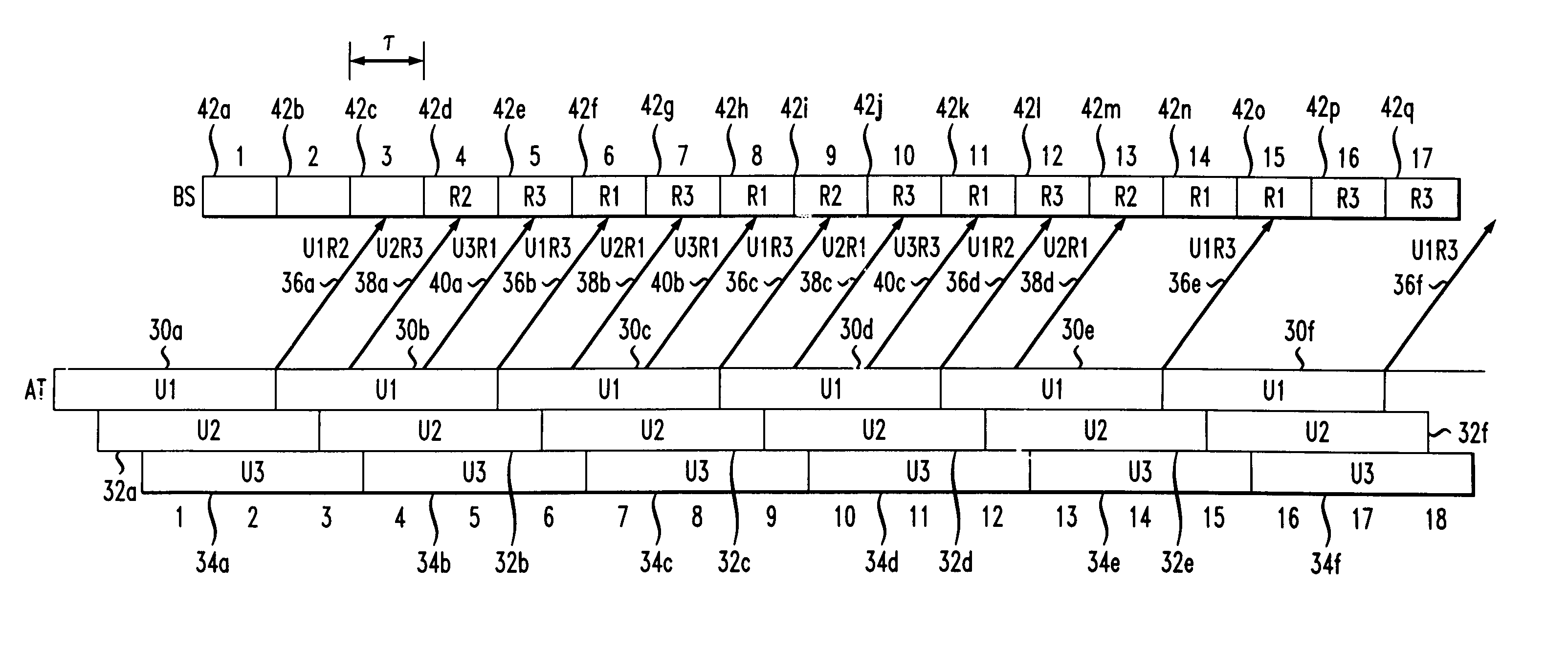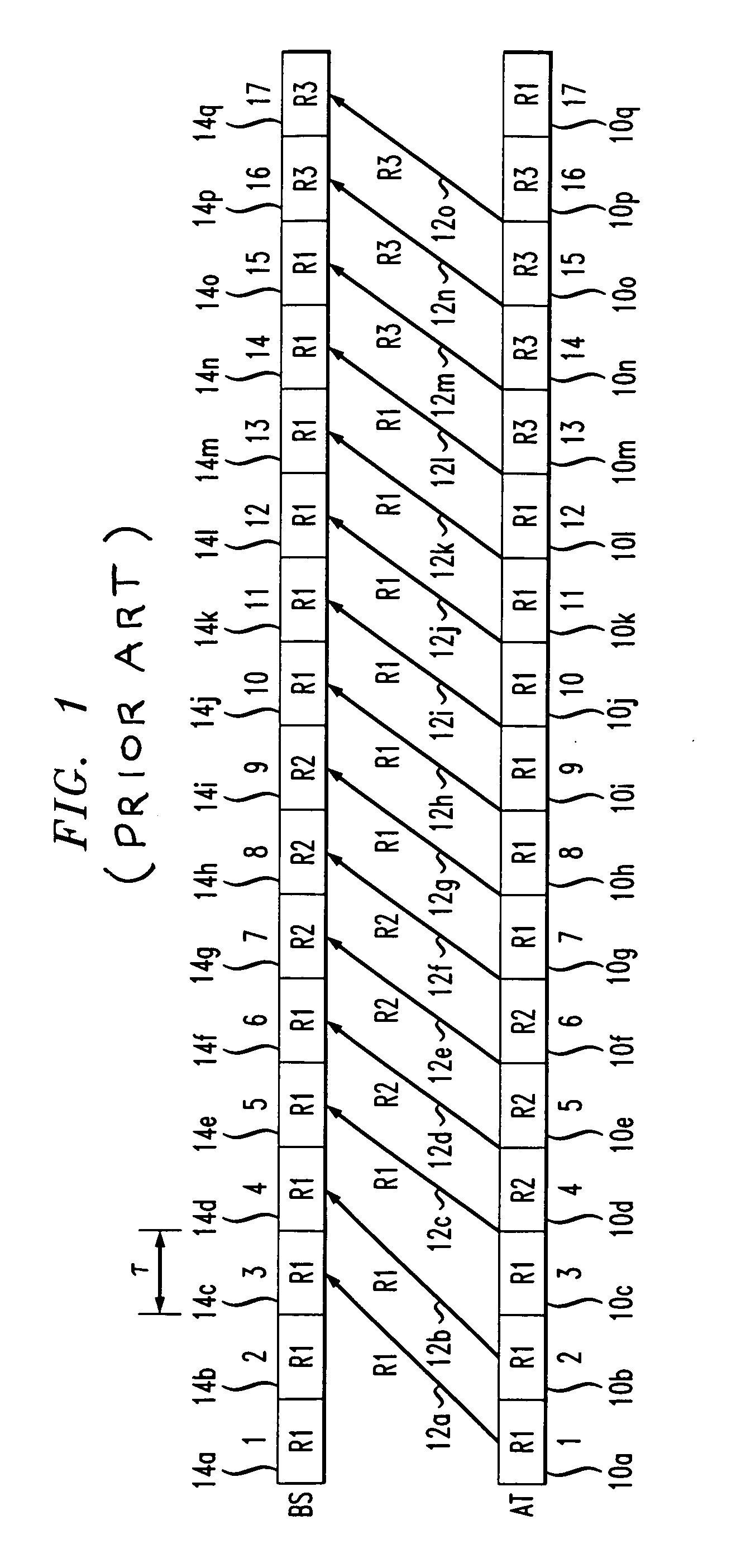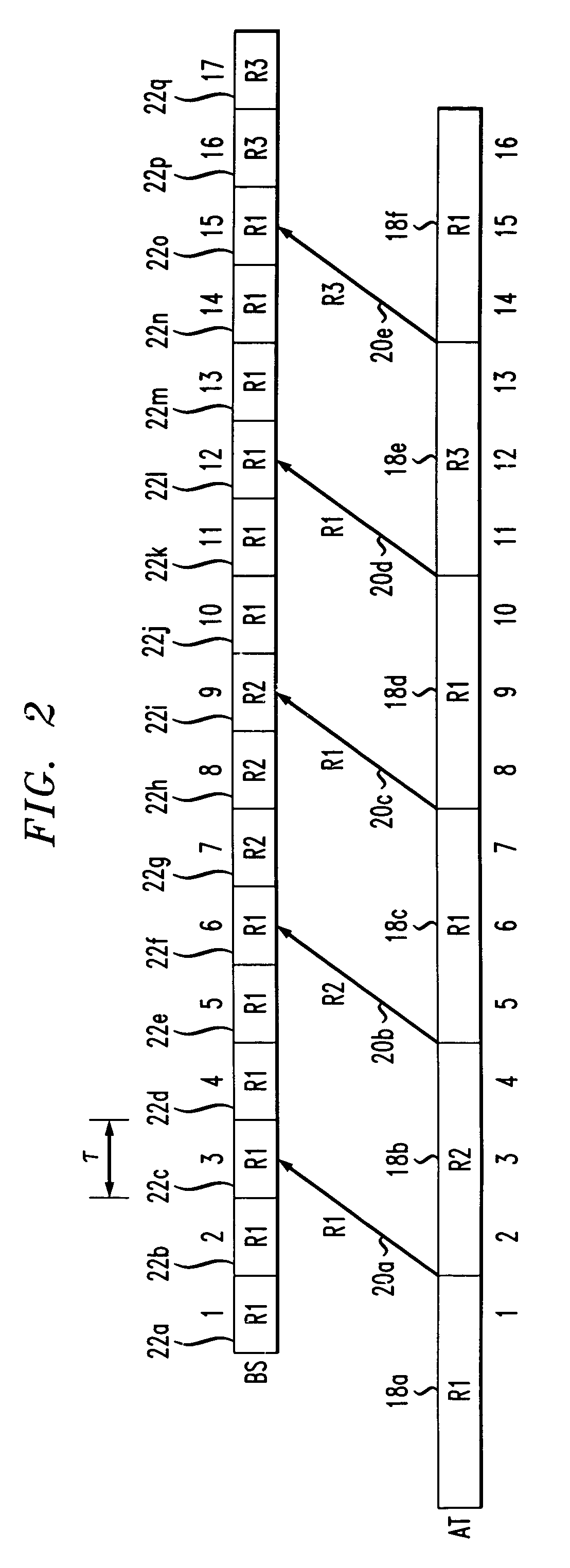Asymmetric rate feedback and adjustment system for wireless communications
a wireless communication and rate feedback technology, applied in the field of wireless communication, can solve the problems of large transmission overhead, disadvantageous processing overhead, and inefficient use of dedicated links for transmitting data, and achieve the effects of reducing processing and transmission overhead, improving flexibility, and improving efficiency of wireless resources
- Summary
- Abstract
- Description
- Claims
- Application Information
AI Technical Summary
Benefits of technology
Problems solved by technology
Method used
Image
Examples
Embodiment Construction
[0015]Illustrative embodiments of the rate adaptation system are described with respect to a rate adaptation system where the rate of rate feedback is asymmetrical with the rate of rate adaptation. Such asymmetry can be exploited because: 1) frame boundaries on the uplink can be staggered or asynchronous, so rate changes from the users are received at different times; and 2) while it is better to keep the feedback rate on the uplink low (for example, so as not to load the uplink with high rate feedback whose very high rate is of minimal benefit), it is advantageous to provide a finer rate granularity on the downlink, thereby allowing the system to adapt the shared data channel quickly in response to a better rate report from a different wireless unit which is selected to use the shared data channel.
[0016]FIG. 1 depicts a signaling diagram between a base station (BS) and a wireless unit or access terminal (AT) for a rate adaptation system in the 3G-1x EVDO system. The calculation and...
PUM
 Login to View More
Login to View More Abstract
Description
Claims
Application Information
 Login to View More
Login to View More - R&D
- Intellectual Property
- Life Sciences
- Materials
- Tech Scout
- Unparalleled Data Quality
- Higher Quality Content
- 60% Fewer Hallucinations
Browse by: Latest US Patents, China's latest patents, Technical Efficacy Thesaurus, Application Domain, Technology Topic, Popular Technical Reports.
© 2025 PatSnap. All rights reserved.Legal|Privacy policy|Modern Slavery Act Transparency Statement|Sitemap|About US| Contact US: help@patsnap.com



